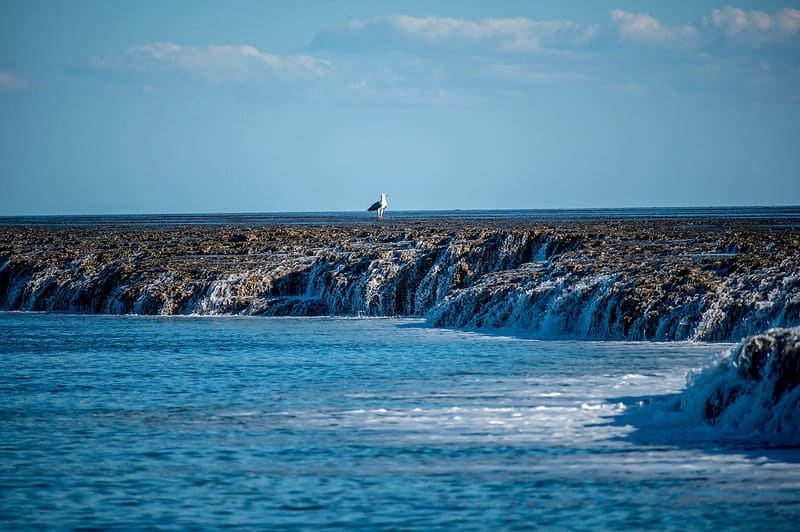Swim toward the sound
A crackling fire, a whistling tea kettle, a ticking clock — the sounds you associate with home become so familiar that just hearing them can transport you back there. Same with fish. Marine biologists have found that, when rebuilding coral, playing audio recordings that were made when the reefs were healthy can help lure their former residents back.
A recent research paper rounds up the evidence that the sounds of a healthy reef system can attract fish, helping to bring the coral back to life. In one 2017 experiment, scientists played recordings taken at one Great Barrier Reef site before cyclones and bleaching events devastated the area. Twice as many fish returned to the sites where the sounds were played. “We found that we could actually start to rebuild the reef community,” said one of the researchers.

The reason it works is simple: a noisy ocean is a healthy ocean. As Hakai writes: “fish whistle and grunt, sea urchins scrape food from the seabed, dolphins squeal.” These sounds signal to other marine life that the area is a good place to live, a tactic that has also worked with seabirds, as Hakai also recently reported. “The acoustic world underwater is critical for the survival of most animals,” said one of the researchers. “We are starting to see the world from their perspective in a way that we don’t, really, when we simply swim around with our eyes open.”
Faith in the future
Despite its vulnerability to rising oceans, Florida lags in the fight against climate change. In parts of the Sunshine State, however, the struggle is getting a hand from a higher power. Southerly takes a look at how Florida churches are mobilizing their congregants to save the climate. For instance, the First Presbyterian Church of Tallahassee is making a push to go carbon neutral. And the EPA has hailed the First Baptist Church of Orlando as a model for energy efficiency.
Crushed by negative news?
Sign up for the Reasons to be Cheerful newsletter.But perhaps nowhere are such faith-based efforts more impactful than in the Florida Keys, which are extremely vulnerable to sea-level rise and are also the kind of small communities where churches wield a lot of influence. At St. Paul’s Episcopal in Key West, for example, the Reverend Donna Mote is initiating a renewable energy audit of her church site and asking her parishioners to bike to services instead of drive. “We are called to be on the ground in the wake of a disaster,” Mote said. “What about our role in addressing the factors that are leading to the increase of these disasters?”
Seeing is believing
A British patient in need of a prosthetic eye has received one — from a 3D printer.
According to the hospital, the 3D printed prosthetic, the first in the world to be implanted in a patient, has “clearer definition and real depth to the pupil,” making it more realistic than conventional prosthetic eyes, which are usually hand-painted discs. The 3D printed model is also easier to implant. And now that the technology has proven itself, it is expected to cut in half the time it takes to custom-build a prosthetic eye. A clinical trial with more patients is set to begin soon, after which the new method could come into widespread use.
“When I leave my home I often take a second glance in the mirror, and I’ve not liked what I’ve seen,” said the recipient, Steve Verze, an engineer from East London. “This new eye looks fantastic and, being based on 3D digital printing technology, it’s only going to be better and better.”







